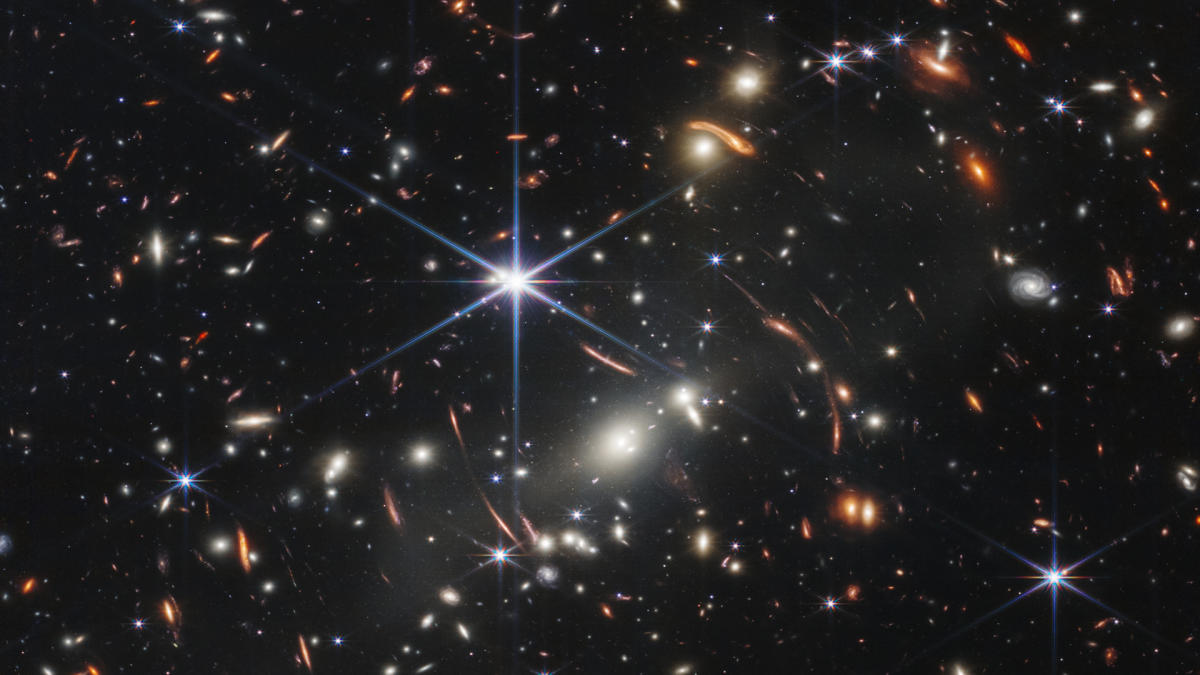NASA’s James Webb Space Telescope (JWST or Webb) has revolutionized astronomers’ understanding of the universe by accurately determining the distance of nearly 200 galaxies and galaxy clusters that formed in the early stages of its existence. In a groundbreaking move, the JWST released its very first image on July 11, 2022, capturing a mesmerizing deep field view of over 7,000 galaxies. This image has become a valuable resource for astronomers, providing them with a plethora of opportunities to delve deeper into the study of galactic evolution over time.
The recent Canadian-led study, utilizing the JWST’s capabilities, has managed to measure the distances to these galaxies, uncovering vast collections of stars as far as 10 billion light-years away from Earth. These galaxy clusters present ideal subjects for future research endeavors that aim to gain a comprehensive understanding of the evolution of galaxies and the clusters they inhabit. This discovery opens up a new realm of possibilities for the astronomical community, shedding light on previously unexplored avenues of research.
The JWST, a $10 billion project launched by NASA in December 2021, is equipped with a set of powerful instruments designed to obtain crucial information about the universe since the Big Bang. It seeks to solve the mysteries surrounding the emergence of light, the formation of the first stars, and the birth of the earliest galaxies. One of these remarkable instruments is the Canadian NIRISS (Near Infra-Red Imager and Slitless Spectrograph), optimized for gathering light signatures, known as spectra, from distant stars and galaxies. Spectra provide vital information about an object’s distance through redshift, which occurs as a result of the universe’s expansion.
The lead author of the study, Gaël Noirot, a postdoctoral researcher at Saint Mary’s University, explains that NIRISS is particularly suited for this task because it can measure the redshifts of multiple galaxies simultaneously. This published study serves as a valuable resource for the astronomical community, paving the way for further research opportunities.
The groundbreaking SMACS 0723 deep field image, acquired with a mere 12.5-hour exposure, portrays galaxies emitting light that traveled over 13 billion years to reach our planet. Through this study, astronomers have discovered new galaxies within the SMACS 0723 galaxy cluster, a colossal gathering of galaxies, with light that took more than 4 billion years to reach Earth. This data is instrumental in unraveling the changes these structures undergo under the influence of dark matter – a dominant force constituting approximately 80% of the universe’s mass. Despite its pervasive impact, dark matter can only be observed through its gravitational effects, posing a considerable challenge for astronomers trying to chart its manifestation.
Additionally, the study revealed the presence of three objects, exhibiting greater-than-normal densities, within the SMACS 0723 galaxy cluster. These overdensities suggest the existence of three newly discovered galaxy clusters located approximately 8 to 10 billion light-years away from Earth. Furthermore, one of these overdense regions houses the “Sparkler Galaxy,” which made headlines in September 2022. Situated nine billion light-years away, the Sparkler Galaxy could possibly be home to the universe’s earliest star clusters. The discovery of these overdensities indicates that the Sparkler Galaxy is not an isolated phenomenon but is part of a larger galactic family.
Study co-author Marcin Sawicki, a professor and Canada Research Chair at Saint Mary’s, highlights the significance of the Sparkler Galaxy’s inclusion in a group of galaxies, emphasizing its implications for understanding the formation of the first star clusters after the Big Bang. The insights gained from this study are invaluable in unraveling the mysteries of our universe.
The members of the Canadian NIRISS Unbiased Cluster Survey, including the study authors, plan to utilize the instrument further in JWST’s second year of observations. They aim to explore deeper into the deep field, searching for new galaxies, galaxy clusters, and overdensities that will undoubtedly contribute to our expanding knowledge of the cosmos.
This remarkable study has been published in the October 2023 issue of the Monthly Notices of the Royal Astronomical Society, serving as a testament to the continuous progress made by the James Webb Space Telescope in unraveling the universe’s secrets.


